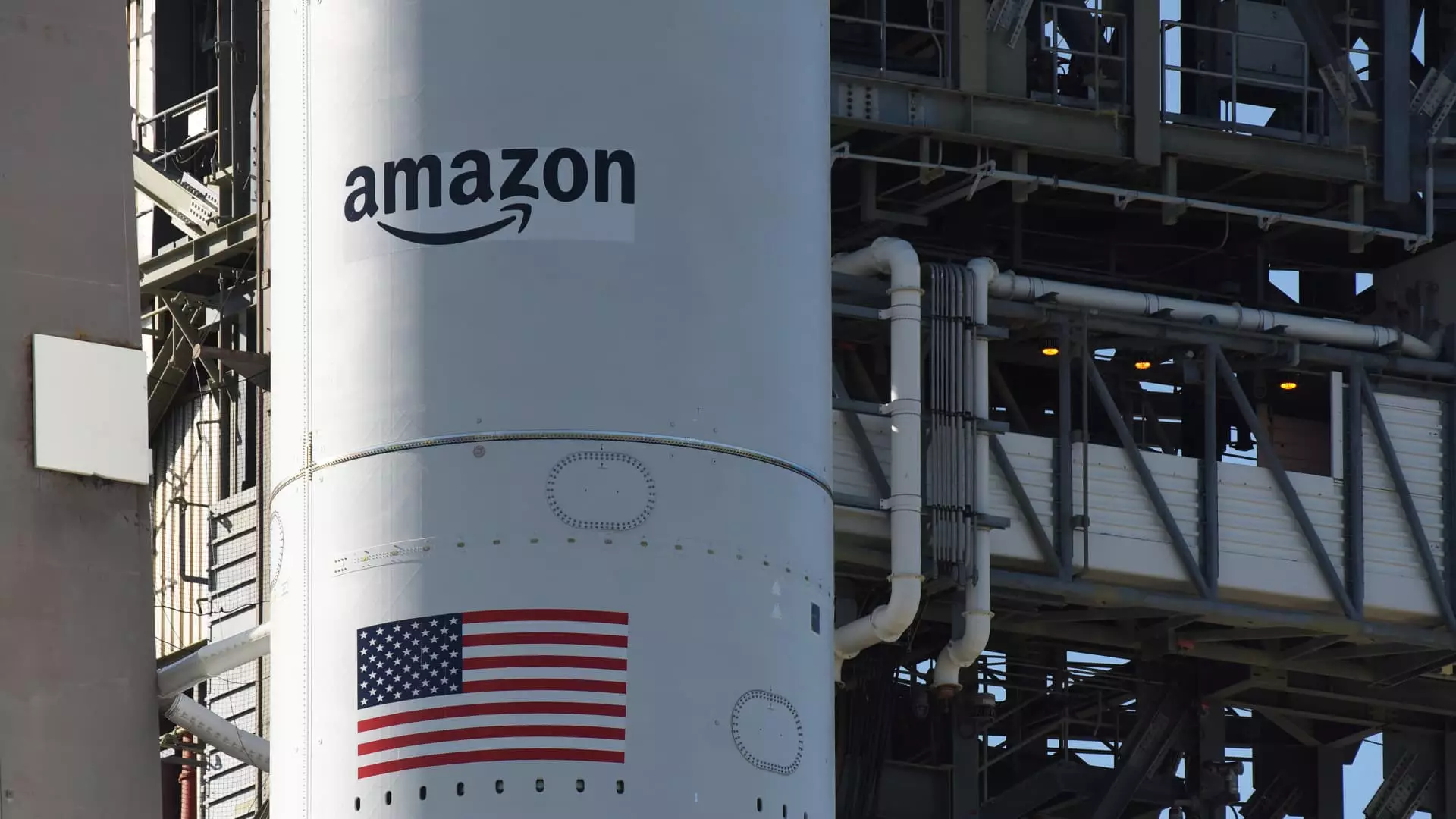In a blow to its ambitious satellite internet project, Amazon’s Kuiper initiative faced an unwelcomed hurdle on Wednesday night, when a launch slated for Cape Canaveral was postponed due to adverse weather conditions. The United Launch Alliance (ULA) reported that “stubborn cumulus clouds” and significant winds hampered the operation, making it impossible to proceed with the countdown. This incident highlights the unpredictable nature of space launches, where a single meteorological event can derail plans set in motion for years. As we peer into the deeper implications of this delay, it’s imperative to recognize not just the technical setbacks but also the time-sensitive nature of Amazon’s entry into a fiercely competitive arena.
The Race Against Time and Rivals
Amazon has staked its claim in the low Earth orbit (LEO) satellite internet race, seeking to provide speedy and reliable internet to a mix of consumers, corporations, and government services. However, it is working against a pressing deadline from the Federal Communications Commission (FCC), which mandates that the company has to launch at least half of its satellite constellation—1,618 satellites—by July 2026. This looming deadline adds urgency not just to Amazon’s operations but fundamentally alters its strategic considerations.
The company’s entry into this sector is arguably an uphill battle, especially when juxtaposed against the dominance of SpaceX’s Starlink, which boasts an operational fleet of around 8,000 satellites. With Elon Musk’s enterprise already entrenched in government discussions and backed by substantial user adoption, Amazon’s Kuiper faces an uphill climb to carve out its niche and gain market traction.
Implications for Future Growth
The setbacks aren’t just temporary; they have ripple effects on Amazon’s strategic growth. As the competition heats up, delays could mean missed opportunities for securing partnerships and contracts. Moreover, every moment lost may deepen the already significant market lead garnered by entities like Starlink. The upcoming launch is critical as it is intended to kick off a series of planned deployments, which the company expects to accelerate once they overcome initial hurdles.
This situation underscores the broader discussion about the regulatory and logistical landscape of space exploration and the challenges new entrants face in keeping pace with established market players. The pressure mounts as Amazon prepares for its next attempt, with all eyes on ULA’s Atlas V rocket, which is set to ferry its satellites to orbit.
Consumer Expectations and Corporate Strategy
As Amazon hones in on offering its satellite internet services, consumer expectations will inevitably shape its strategy. Prices, accessibility, and user experience will be paramount in a market already teeming with competition. With Starlink already making waves with widespread adoption and user-friendly installations, Amazon’s Kuiper will need to not only match but surpass the baseline set by its competitors.
Ultimately, this moment serves as a reminder of the current state of play in the satellite internet market—where every day counts, and the race to connect underserved markets and bridge the digital divide becomes increasingly crucial. How Amazon navigates this storm, both literally and figuratively, could set the tone for its long-term impact on the industry and the fate of its satellite constellation ambitions.

